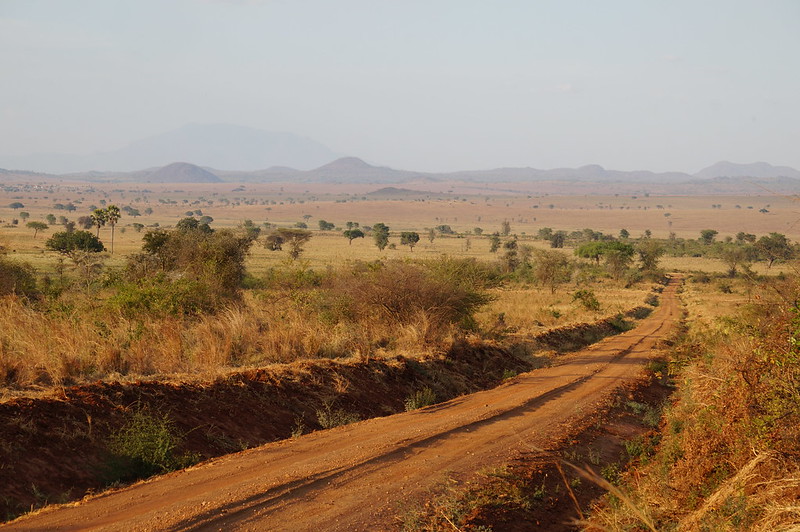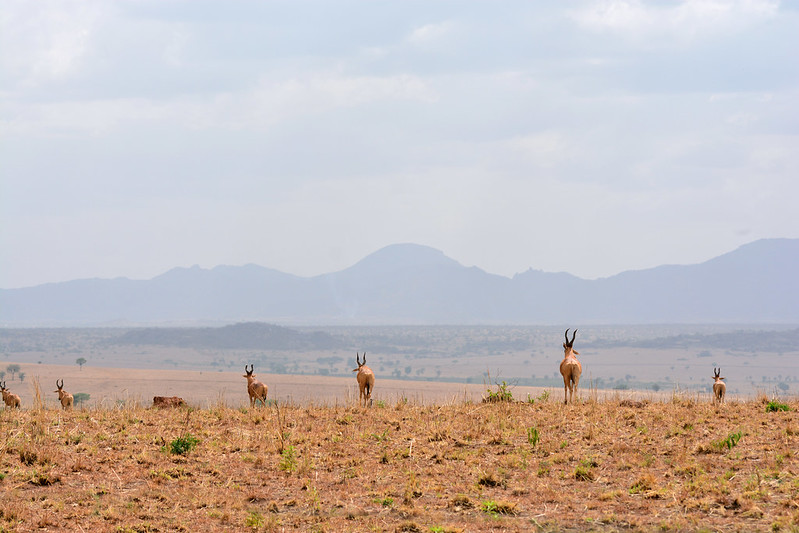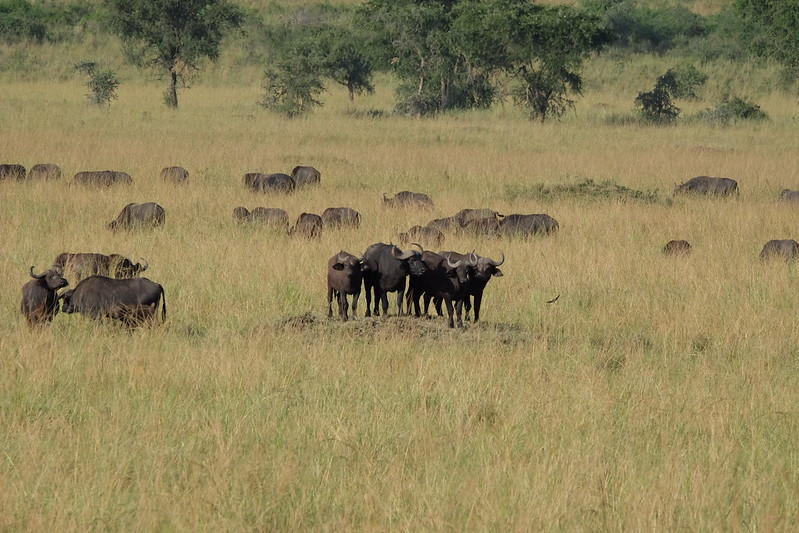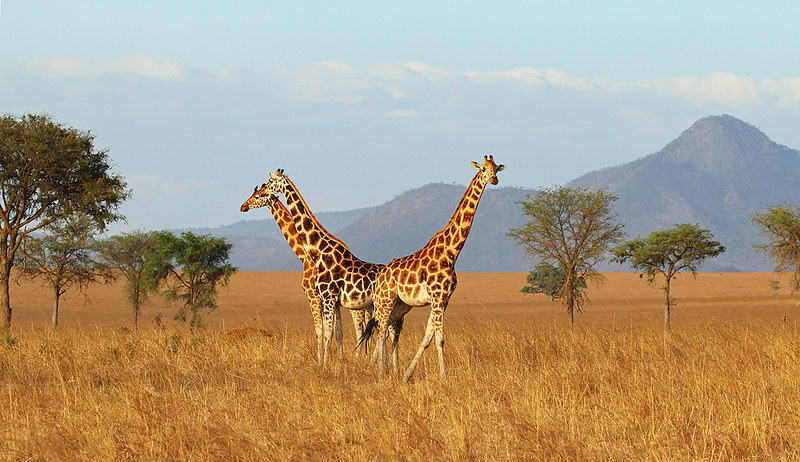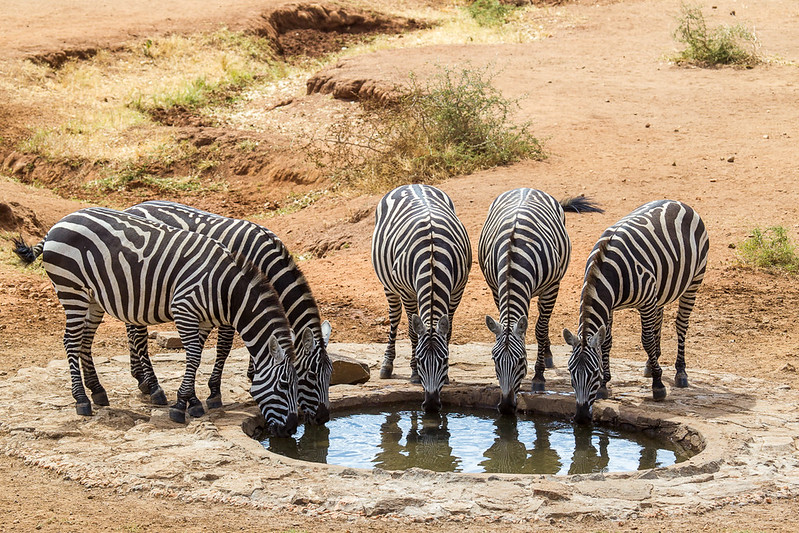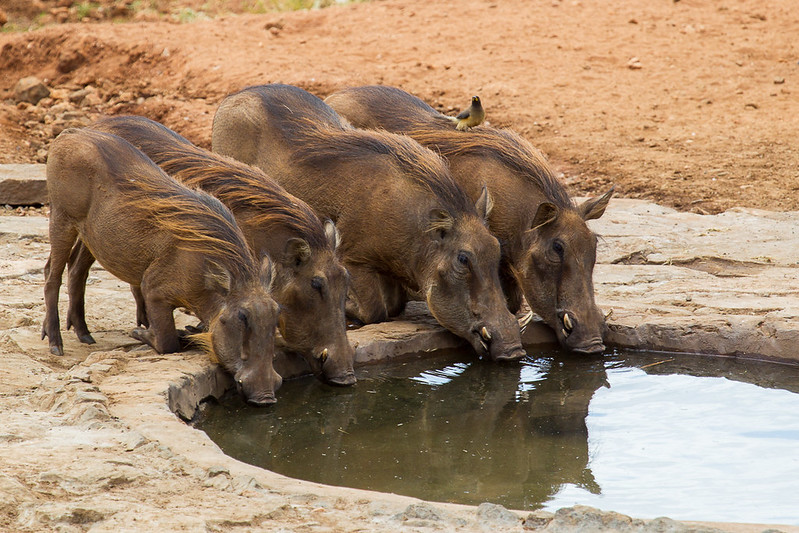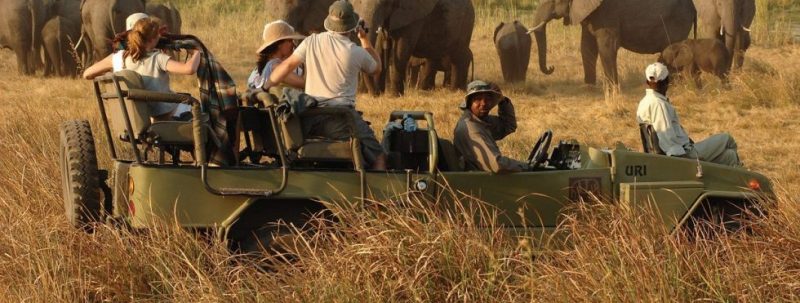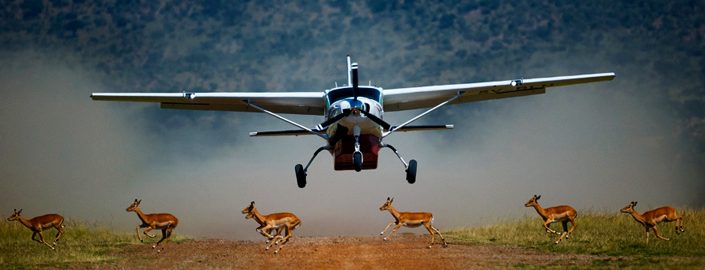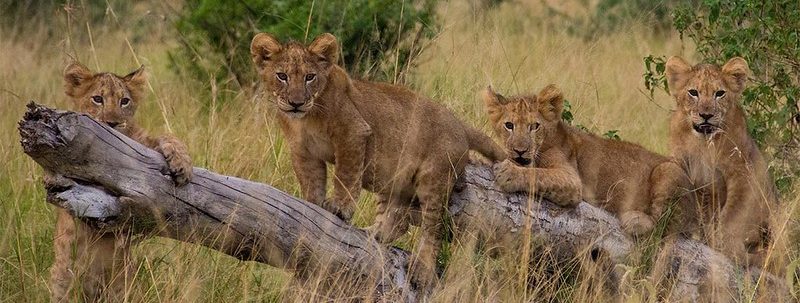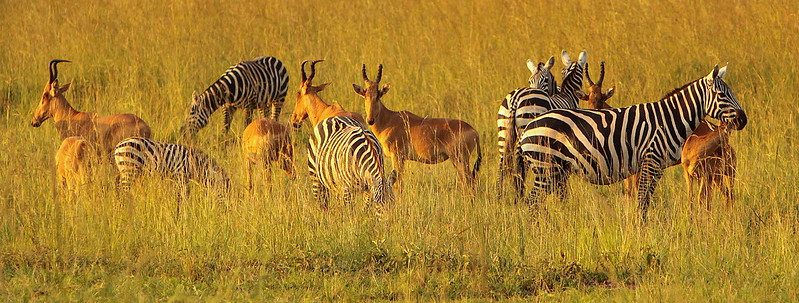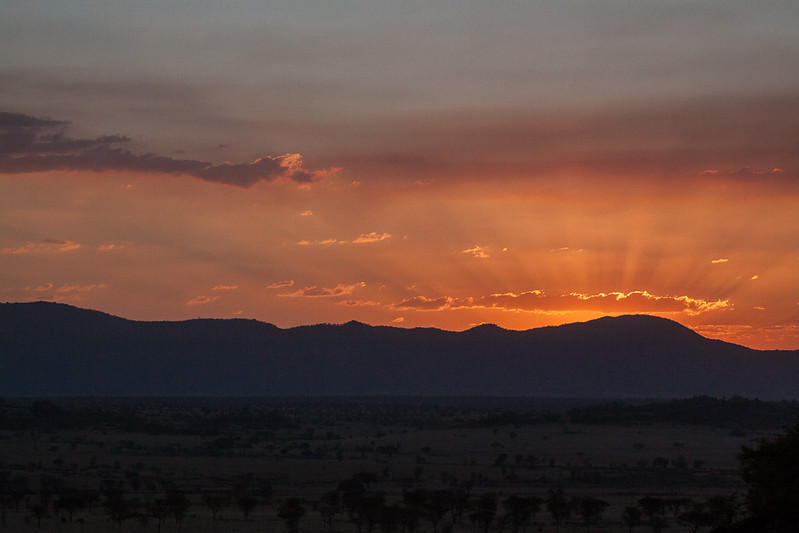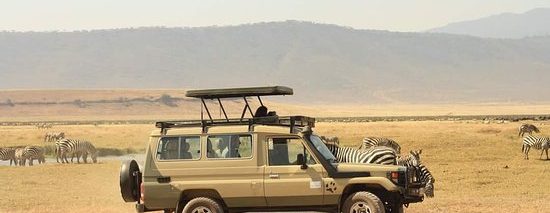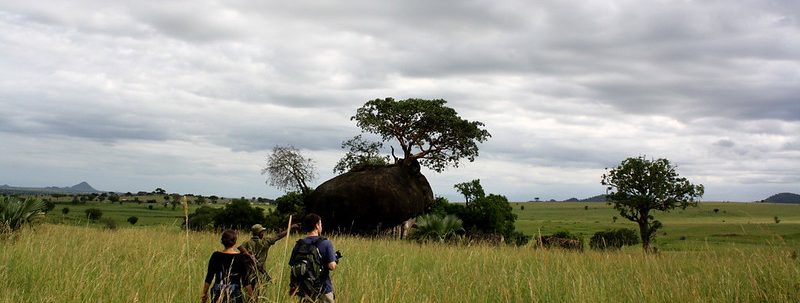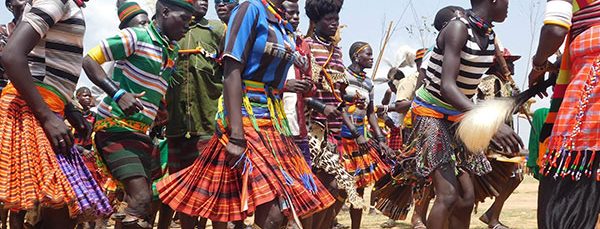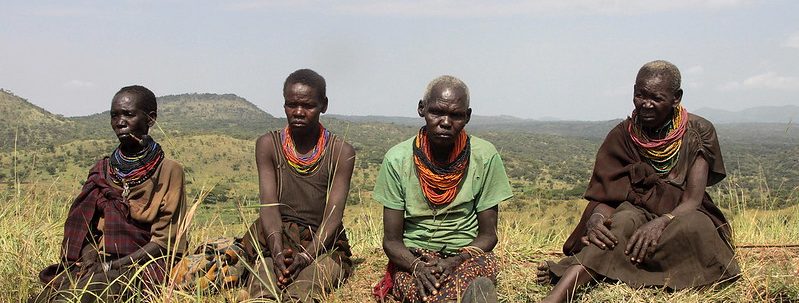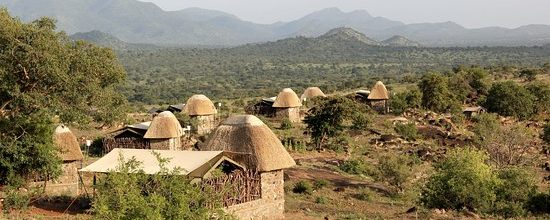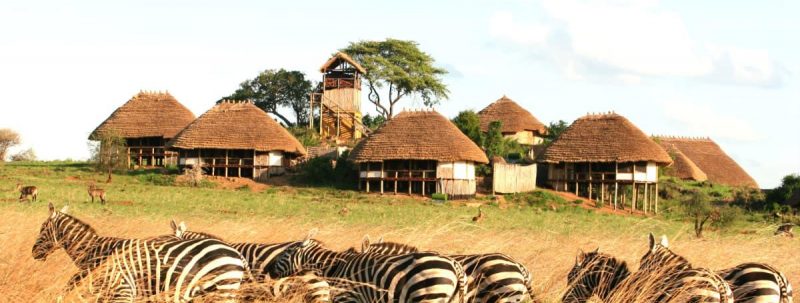Kidepo Valley National Park
Kidepo Valley National Park at 1,442km2 is a massive semi arid plain stretch of land extreme north east on the boundaries between Uganda and her neighbour countries Kenya and South Sudan. It was gazetted a national park in 1962 because of its high quality of and big numbers of wildlife species some not found anywhere else in Uganda. The park boasts of more than 77 mammal species most notable four out of the Big 5 giant mammals of Africa; Lions, elephants, buffalo and leopard. Take a Uganda safari into this extremely beautiful savannah grassland plains, dotted with almost evenly spaced acacia trees and borassus palms and meet very colourful mammals with beautiful colour patterns; cheetah, zebra, giraffe, and leopard at close range. In this national park blessed with magnificent beauty are more than 425 bird species most outstanding the Ostrich; the largest bird on the planet found nowhere else in Uganda.
Kidepo Valley National Park is more than 700km away from Kampala; Uganda’s capital city by road and not close to other urban centres. It is one of those virgin places whose outstanding natural beauty, has been less encroached upon by human activity, is less congested and a place where those who love a laidback lifestyle, nature and adventure get true happiness. Kidepo ranks highly amongst Africa’s wildest places with pure air; free of all pollutants.
Kidepo Valley altitude rises from 914m at Narus and Kidepo riverbeds to the highest point Morungole 2,750m above sea level. It generally a semi arid flat plain that extends beyond eyes can see and one of those rare places of the wild Africa in which wildlife spotting and nature interpretation is less tiresome.
Note the local communities around the park; a pastoral Karamojong people have lived in the wilderness grazing their big herds of domestic animals mutually alongside wild animals. They have all along depended on their domestic animals for all their basic home needs and have less contact with European civilisation. In some way their cultural and traditional activities support wildlife conservation purposes. Take organised safari into their homesteads manyatta in a big way of meet face to face with the core of African civilisation in its raw and natural form.
Introduction To Kidepo Valley
Kidepo Valley National Park At A Glance
A captivating region of semi-arid savanna, seasonal rivers, and low mountains, Kidepo is situated in the far north-east of Uganda, close to the borders of South Sudan and Kenya. At any time of the year, it is stunning and easily accessible.
The terrain of Kidepo Valley National Park is 1,442km2. The valley floor is 914 meters above sea level, and Mount Morungole’s 2,750-meter peak dominates the horizon.
In the wet season, the Kidepo and Narus rivers flow through the savannah environment, and they vanish in the dry. The most solitary national park in Uganda is Kidepo because of its isolation. The sparse number of visitors has helped to preserve the wilderness’ distinctive atmosphere.
It was cut off for years by various types of fighting, and only recently has it been made accessible by both road and air. Only two lodges and a government rest camp are accessible right now. These two elements have worked together to keep visitor numbers low, along with the park’s relatively hefty entry fee. However, those who succeed are in for a treat, and the enjoyment is further increased by the fact that you are far from civilization and off the beaten path.
The Kidepo Area contains 2 parts attached on it which include the Matheniko Wildlife Reserve and the Bokora Wildlife Reserve. Matheniko Wildlife Reserve is located in the southeast and is also part of the larger kidepo valley conservation area. Bokora Wildlife Reserve is located in the southwest and it borders matheniko Wildlife Reserve as well as Pian Upe Wildlife Reserve. At Kidepo don’t miss out the great views of Mount Morungole.
How to Get To Kidepo Valley
By road.
Most tourists arrive by car, which on a sealed route takes no more than seven hours from Murchison Falls. Some travelers decide to take a break from the adventure by staying the night close to Sipi Falls. Kidepo is 571 kilometers away from Kampala. Few people take the arduous 10-hour drive through Gulu and Kitgum from Kampala because it is so long and difficult depending on the weather of the day when rainy, it’s a bit hard but in sunny times its ease hence a great safari
By Air.
A few light aircraft firms that fly into the airport nearby Apoka serve Kidepo. These flights are expensive for couples or small groups traveling alone because they only operate on specific days and require a minimum number of passengers, but they are not too pricey for families or bigger groups. But don’t let that deter you—there is something quite magical about taking off from Entebbe and circling over the dramatic Murchison Falls before continuing on to the vast Kidepo.
Wildlife in Kidepo Valley National Park
Wildlife Animals
Only Queen Elizabeth National Park has more biodiversity than Kidepo, Uganda’s third-largest national park. 77 different mammal species may be found at Kidepo, and there are many of opportunities to see game there. There are 20 different types of predators, including lions, leopards, and spotted hyenas, Aardwolf, cheetah, caracal, bat-eared fox, and black-backed jackal are native to Kidepo in Uganda. The number of elephants has increased to over 650 (from 200 in the middle of the 1990s), the number of buffalo is thought to be over 10,000, and there are over 50 Rothschild’s giraffes, a population that is significant on a global scale.
Wildlife Species
Both larger and smaller kudu roam the dense woods while zebra graze on the plains. Adventurers in luck might even spot a white-eared kob, which is more frequently spotted in South Sudan and Ethiopia.
There are now 470 species of birds on the list. Not a single other national park in Uganda has 60 of these recorded. Only in Kidepo can one find Clapperton’s francolins and rose-ringed parakeets in East Africa. There are 56 different raptor species, and the vultures in the area are thriving. In addition, bird aficionados can only see the majestic Common Ostrich at Kidepo in Uganda.
More About Kidepo Valley National Park
When to visit Kidepo Valley
Kidepo is open every day of the year. Its general climate does, however, differ from that of the rest of Uganda. Despite the fact that June used to be dry, it is now generally acknowledged that a lengthy wet season will last from April through the end of November. There won’t be an eight-month downpour, but most days will likely have some rain.
From December to March is considered the dry season. During this season, the temperature soars, frequently reaching 40 degrees Celsius. Since the park’s sandy soils can’t hold water, it turns parched between the middle and end of the dry season (November to February), which increases the likelihood of seeing wildlife.
Animals gather around dependable water holes during these months since there are fewer available water sources, increasing the likelihood of sightings.
Additionally, this is the ideal opportunity to witness cheetah hunting on the short-grass plains. In contrast, because they migrate from the lowlands to higher ground during the wet season (April to August), animals are harder to find.
What To Do While In Kidepo Valley National Park
Game Drives (The Quintessential African Safari experience.)
What is Kidepo Valley National park famous for? The Valley is famous for the greatest option known to quickly explore the furthest areas of the wild called Apoka game drives. It is an incredible experience to encounter enormous beasts and predators up close while being safe in your car.
Typically, cars take one of two 20-kilometer paths through the abundantly vegetated Narus Valley. Large buffalo herds, thirsty elephants, and antelope are drawn to this area where a little amount of water persists even during the dry season. When herbivores congregate, predators are drawn to them, and you can see a variety of stunning animals as a result.
Game drives leave in the early morning and late afternoon during the hot, dry season. This enables you to watch the animals in their most animated form and record memories within the optimum photo-taking lighting conditions.
Less species can be seen in the drier Kidepo Valley, but it is nevertheless well worth seeing because of its untamed beauty. Focus on the Kanagorok hot springs, which are located 30 kilometers north of Apoka, but avoid becoming naive. Drive gently, meandering past plains flanked by mountains and across the Kidepo River, which in the dry season has a vast sand bank. Ostrich and secretary birds thrive here, and kudu benefit from the heavier bush’s shelter.
Wildlife & Nature Walks (Step Into The Wild Savannah For a Clear Look)
Observe the feeling of vulnerability that permeates every walk when you head out onto a trail. Assuaged by your guide’s wisdom, you may experience the wilderness in all its splendor.
The majority of the two- to three-hour walking routes wind through the Narus Valley. Given that the short (5 km) radius makes it comfortable for most tourists, the Narus Valley stroll is particularly well-liked. It provides you with plenty of chances to witness a wide variety of gorgeous creatures and birds against the backdrop of an incredible scenery.
In search of the Abyssinian Roller, Purple Heron, Abyssinian Ground Hornbill, and Clapperton’s Francolin, which is exclusively seen in Kidepo, birders frequently scour the edges of the Narus and Namamukweny Valleys.
A 15-kilometer route that follows the ridge line into the hills is available for those seeking a more difficult challenge. There are a lot of potential trails, however some may not have been used in a while and may even be temporarily closed.
Kidepo Valley Cultural & Community Encounters
Karamojong People
The Karamojong are a Nilotic language-speaking ethnic group of nomadic agro-pastoralists who love cattle and came from Ethiopia more than 500 years ago into what is now north-eastern Uganda. The Karamojong, like their compatriots in northern Kenya and south-western Ethiopia, have mainly resisted modernization (although that is starting to change) and continue to lead traditional lives that haven’t changed much since their initial arrival.
Conflict has always been a feature of Karamojong culture as a result of the community’s love of cattle, which has led to disagreements over animals. Assault guns became commonly available after the demise of the Amin administration, briefly closing the area off to outsiders, giving this a more menacing edge. However, since Joseph Kony and the Lord’s Resistance Army left northern Uganda in 2005 and the Ugandan government de-militarized Karamoja in 2011, the region is now both secure to explore and hospitable to tourists.
The Dodoth Karamojong were deprived of their usual grazing and hunting grounds because of the park. Therefore, it is not only important to travel responsibly and interesting to visit the Karamojong to learn about their culture. This guarantees that the Karamojong will gain from tourism directly.
Ik People Treks
The establishment of the park caused the Ik people the most harm. The Ik were formerly pastoralists who lost their cattle to invaders from the Karamojong, Turkana, and Pokot tribes. They are believed to have been the first migrants from Ethiopia. They were expelled from the park in 1962 after reverting to a hunter-gatherer way of life on the lower slopes of the Morungole Mountains. They had little choice except to try subsistence farming in the highlands outside of the park, far up.
The movement, which coincided with a period of widespread starvation known as “the time of one cup,” drove the Ik to the brink of extinction, tested long-standing societal norms, and transformed them into a shadow of their former selves. The anthropologist Colin Turnbull spent three years living with the Ik at this time in the 1960s, documenting the collapse of their society and the horrifying extents to which group members resorted to self-interest. He wrote about it in the book “The Mountain People,” which at the time of its release sparked uproar.
Turnbull was partially aware that the Ik’s exile from the park may have contributed to some of his interactions with them, but he was unaware of the full extent of the trauma.
Getting To Kidepo Valley National Park
Getting There
On typically good roads, it takes six hours to go from Entebbe to Kibale. It takes roughly seven hours to get from Murchison Falls National Park south along the Escarpment to Kibale. It takes roughly three hours to go continuously from Kibale to Queen Elizabeth National Park.
As an alternative, regular flights by light aircraft connect Entebbe with Kasese. It takes slightly under two hours to go from Kasese to Kigali. Flights connect Kasese with Murchison in the north, Kihihi and Kisori in the south, and Kihihi and Kisori in the north.
Accommodation Options in Kidepo Valley National Park
Kidepo Savannah lodge.
There are only two modest tourist lodges in Kidepo. A straightforward but cozy lodge, Kidepo Savannah Lodge is situated 500 meters from Kidepo’s Kalokudo Gate.
Eight self-contained “safari tents” and nine “tents” that share an ablution block branch off of a central eating room and bar with all wines and drinks for the best time in the park
Visitors can enjoy fantastic views of the Narus Valley and the surrounding mountains from this location.
Apoka Safari lodge.
The luxurious Apoka Safari Lodge is well situated on a slight hill in the center of the plains. There is wildlife all everywhere. You are in a great position to admire the wilderness in all its splendor, whether you see zebra or buffalo right outside your room when the grass is lush or lion relaxing by the pool in the dry months.
Ten roomy bandas constructed of thatch, canvas, and wood offer cozy lodging. The eating area and bar are wonderful, with a thatch-roofed area and a high platform that is ideal for observing wildlife. There is a tall observation tower as well, which serves as an unforgettable place to have a private breakfast.

